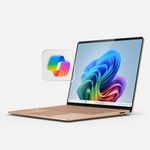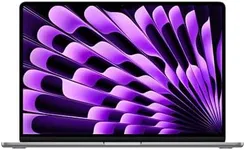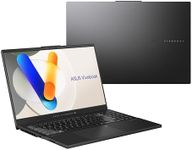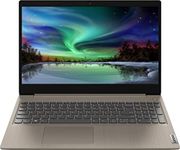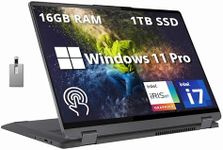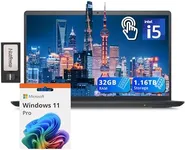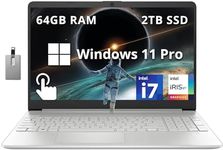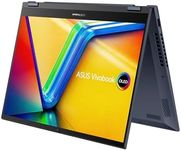Buying Guide for the Best Touchscreen Laptops
Choosing a touchscreen laptop can be a great way to combine the convenience of a tablet with the power and flexibility of a traditional laptop. When shopping for a touchscreen laptop, it's important to think about how you'll use it—whether for work, school, creative projects, or entertainment. Understanding the key features will help you find a model that fits your needs and makes your daily tasks easier and more enjoyable.Screen SizeScreen size refers to the diagonal measurement of the laptop's display, usually given in inches. This is important because it affects both portability and how much you can see at once. Smaller screens (around 11-13 inches) are lightweight and easy to carry, making them great for travel or students. Medium screens (14-15 inches) offer a balance between portability and workspace, suitable for most users. Larger screens (16 inches and above) provide more room for multitasking and creative work but can be heavier and less portable. Think about where and how you'll use your laptop most often to decide which size is best for you.
Touchscreen TypeTouchscreen laptops use different technologies, mainly capacitive and resistive touchscreens. Capacitive touchscreens are more common and respond well to light touches and gestures, making them ideal for smooth navigation and drawing. Resistive touchscreens require more pressure and are less sensitive, but can be used with any object. Most modern laptops use capacitive screens, which are better for everyday use. If you plan to use a stylus for drawing or note-taking, check if the screen supports active stylus input for better accuracy.
Display ResolutionDisplay resolution tells you how many pixels are on the screen, which affects how sharp and clear images and text appear. Common resolutions include HD (1366x768), Full HD (1920x1080), and higher like 4K (3840x2160). HD is fine for basic tasks, but Full HD is better for watching videos, working with documents, and general use. Higher resolutions like 4K are great for creative work and detailed visuals but can use more battery. Choose a resolution that matches your needs—if you value sharp visuals or do creative work, go higher; for basic tasks, lower resolutions are sufficient.
Convertible or Traditional DesignTouchscreen laptops come in two main designs: traditional clamshell and convertible (also called 2-in-1). Convertible laptops can fold or detach to become tablets, offering more flexibility for drawing, note-taking, or watching videos. Traditional designs look like regular laptops but with a touch-enabled screen. If you want to use your laptop in different modes (like tablet or tent mode), a convertible is a good choice. If you mostly use your laptop on a desk, a traditional design may be simpler and sturdier.
Battery LifeBattery life indicates how long the laptop can run on a single charge. This is especially important for touchscreen laptops, as using the touch features and higher-resolution screens can use more power. Laptops with longer battery life (8 hours or more) are better for people who work on the go or away from power outlets. If you mostly use your laptop at home or in the office, battery life may be less critical. Consider your daily routine and how often you'll be able to recharge.
Weight and PortabilityThe weight of a laptop affects how easy it is to carry around. Lighter laptops (under 3 pounds) are easier to take to school, work, or travel. Heavier models may offer more features or larger screens but can be tiring to carry. If you plan to move your laptop often, look for a lightweight model. If it will mostly stay in one place, weight is less of a concern.
Performance (Processor and RAM)Performance is determined by the processor (CPU) and memory (RAM). A faster processor and more RAM mean the laptop can handle more tasks at once and run demanding programs smoothly. For basic tasks like web browsing and word processing, entry-level processors and 4-8GB of RAM are enough. For multitasking, creative work, or gaming, look for mid-range or high-end processors and at least 8-16GB of RAM. Think about the types of programs you use and how many things you do at once to decide what level of performance you need.
Stylus SupportSome touchscreen laptops support stylus input, which is useful for drawing, note-taking, or precise navigation. Not all touchscreens work with active styluses, which offer pressure sensitivity and palm rejection. If you plan to use a stylus for creative work or handwritten notes, check if the laptop supports active stylus input and if a stylus is included or sold separately.


